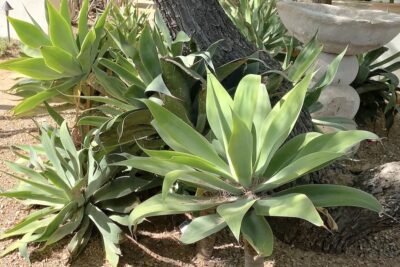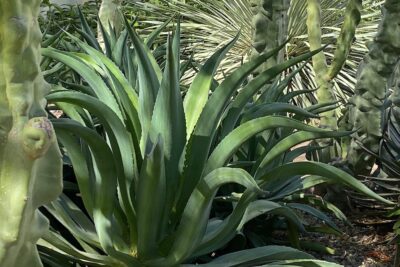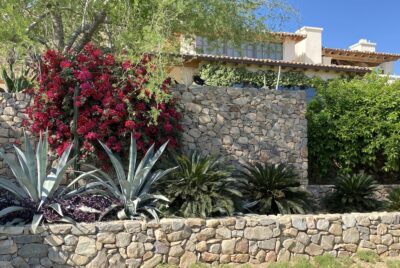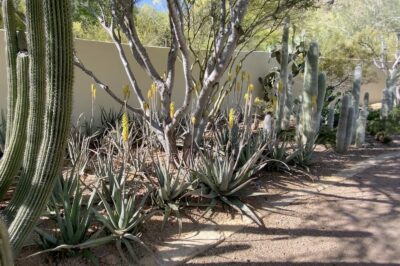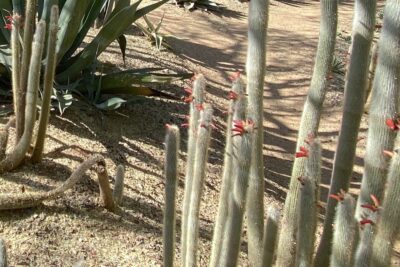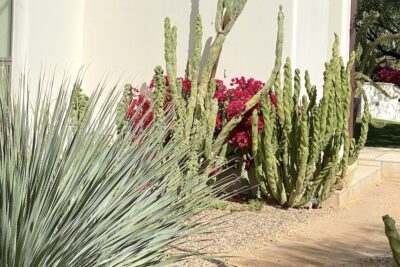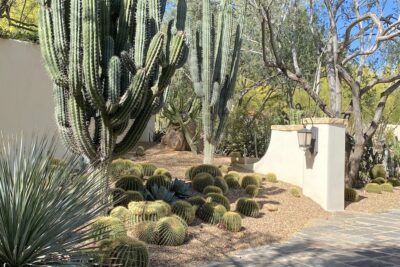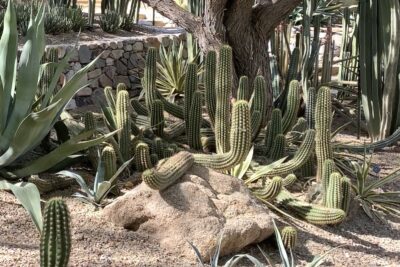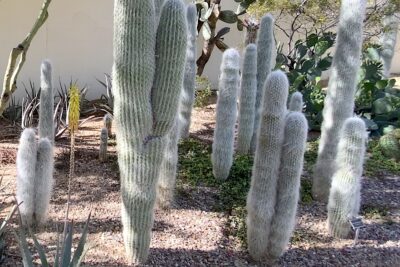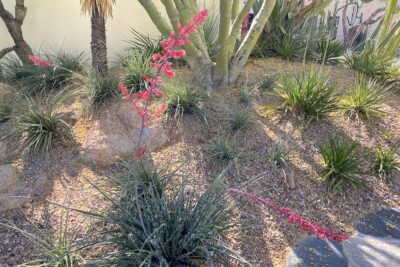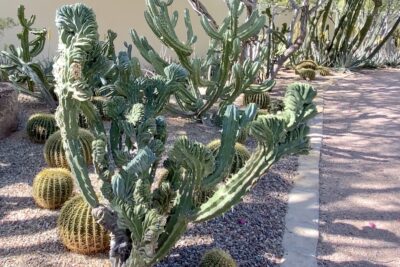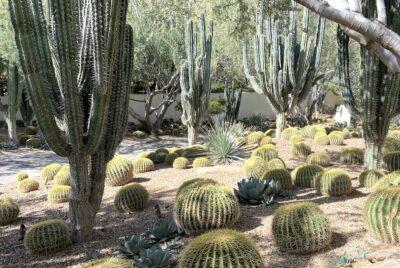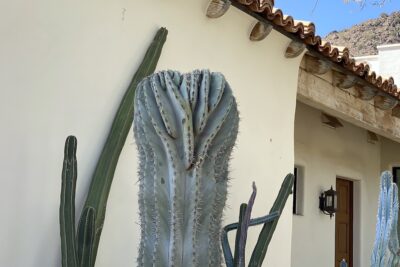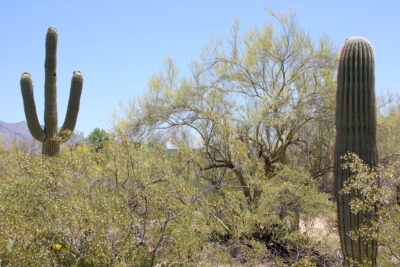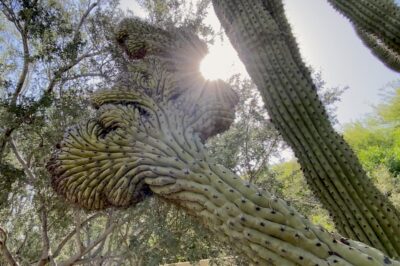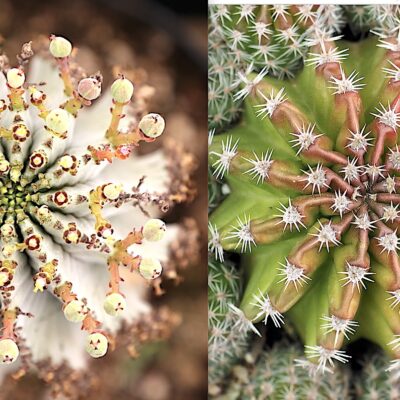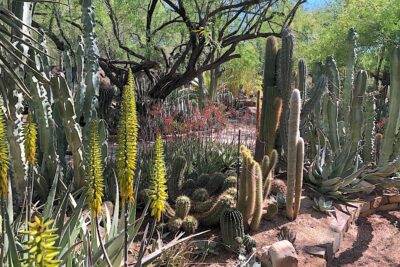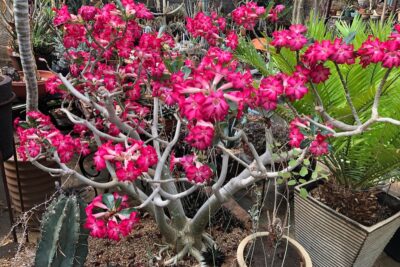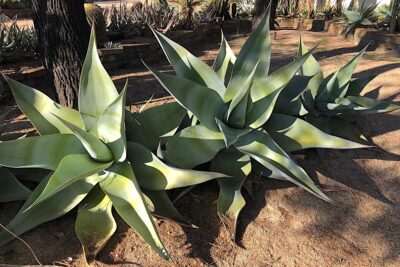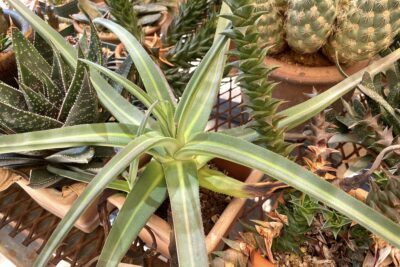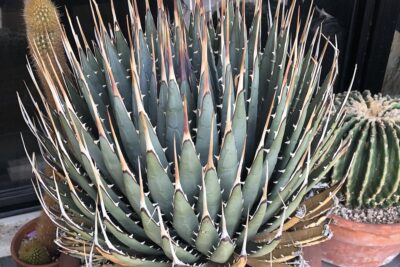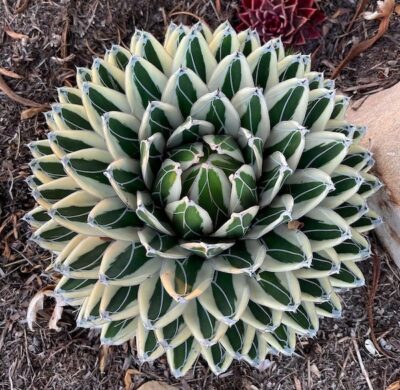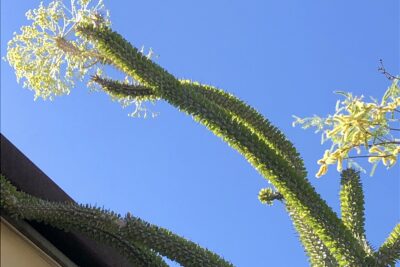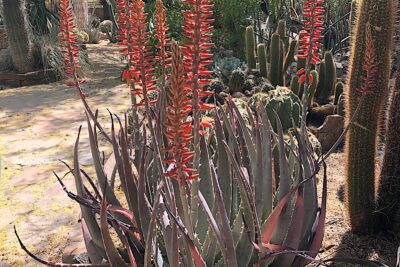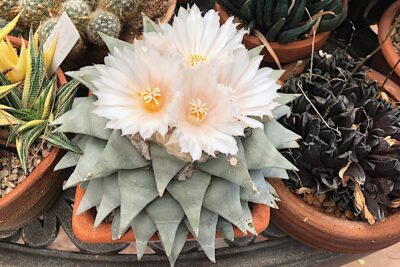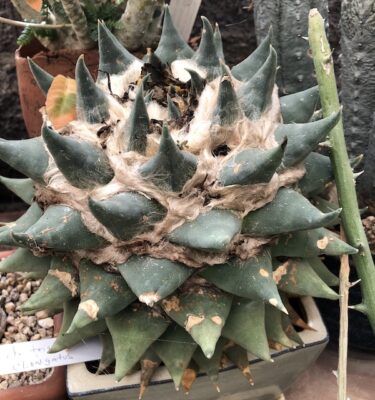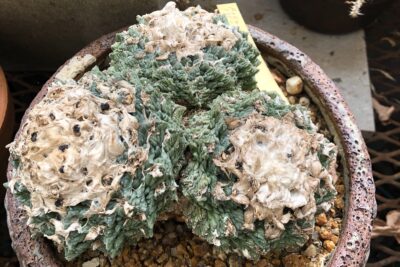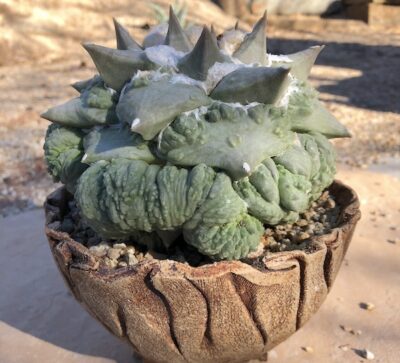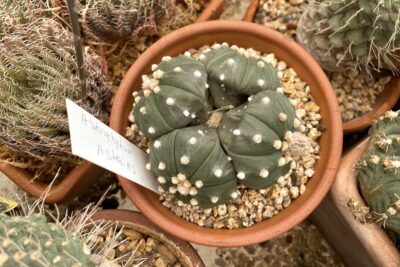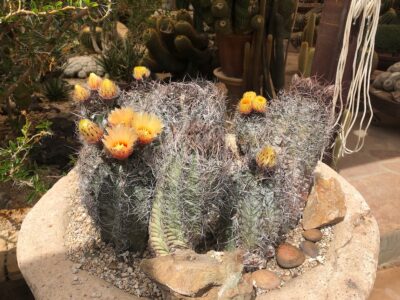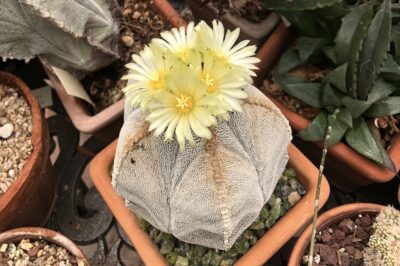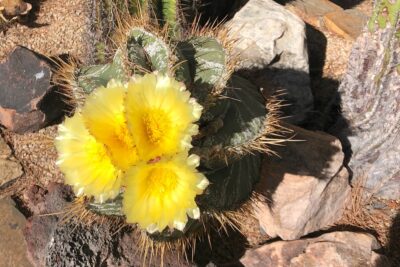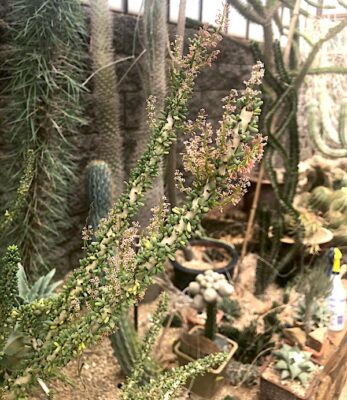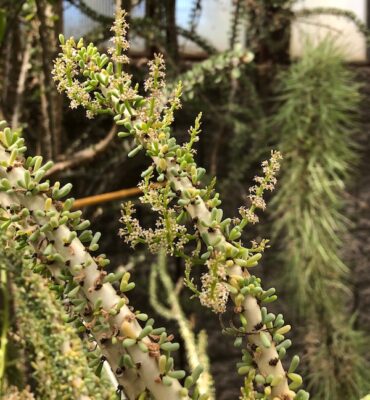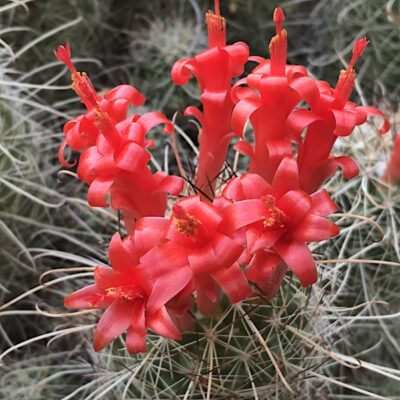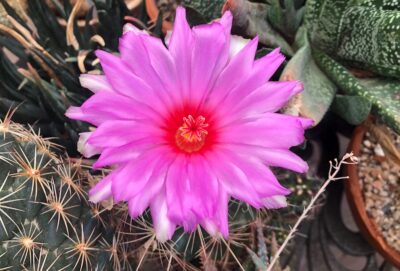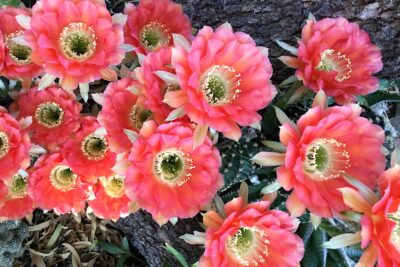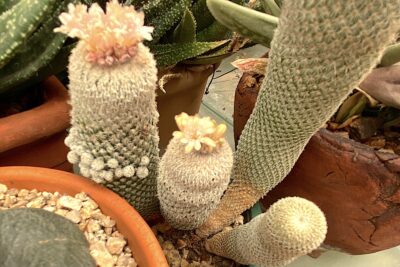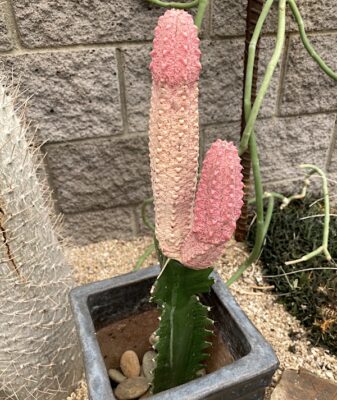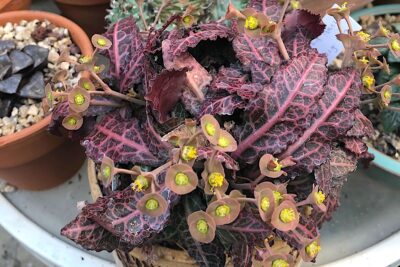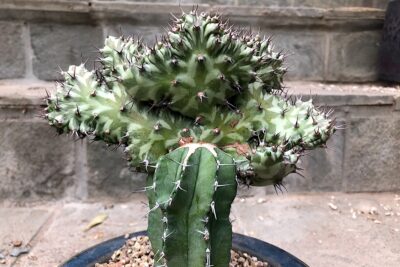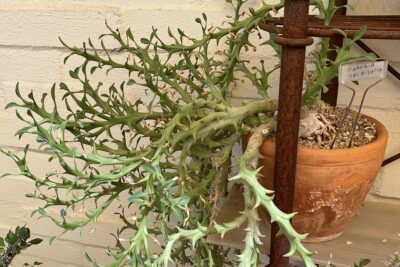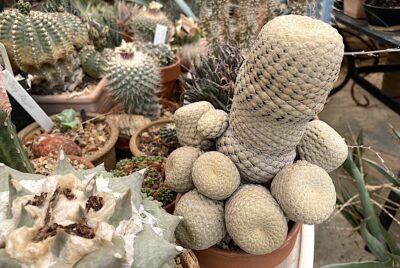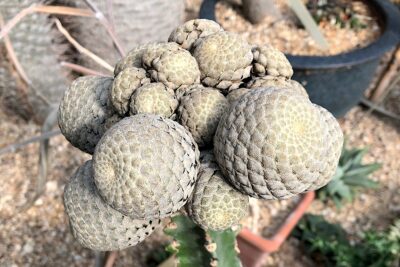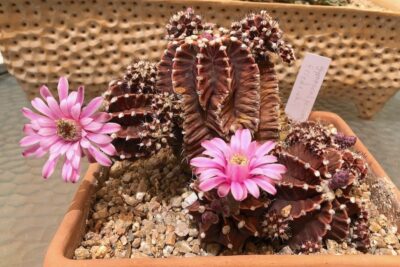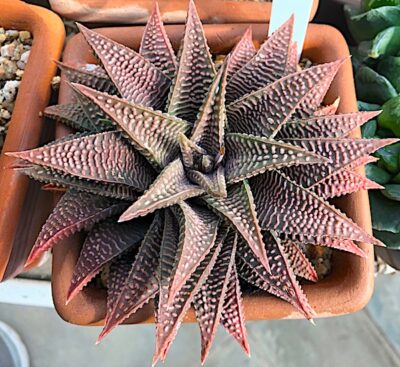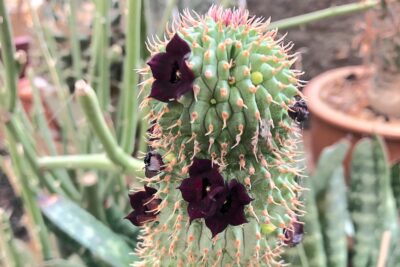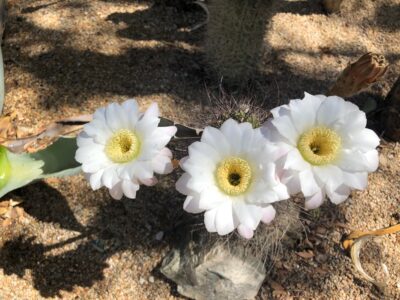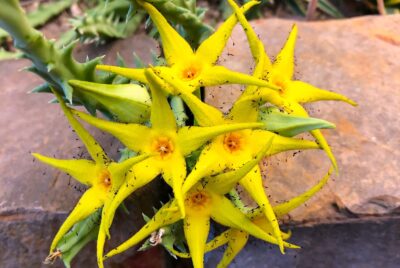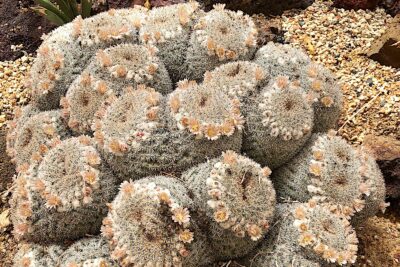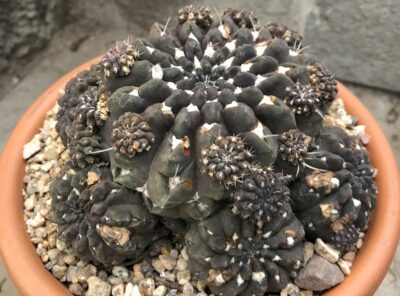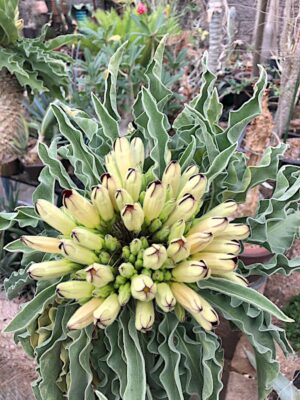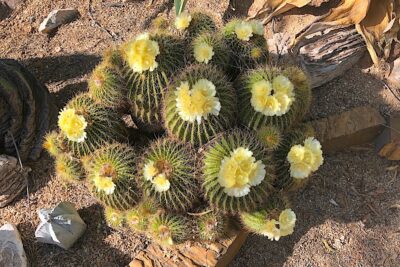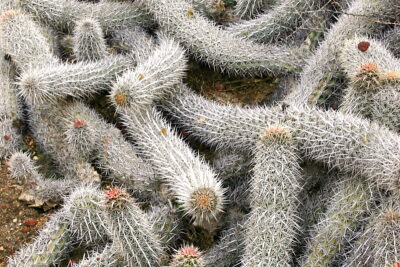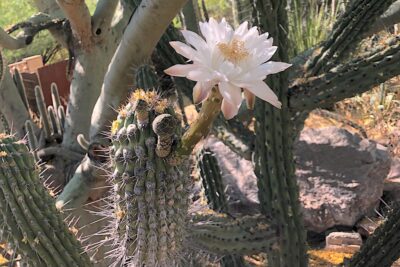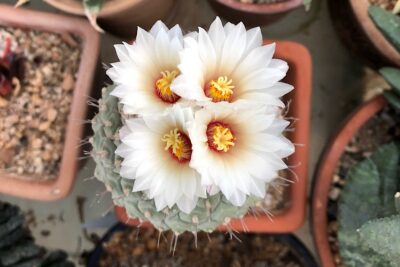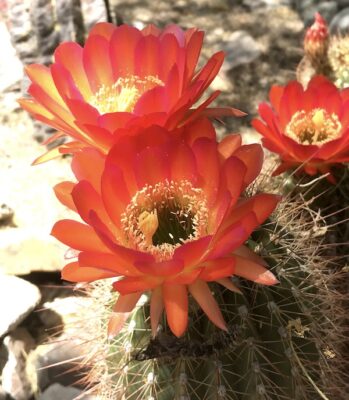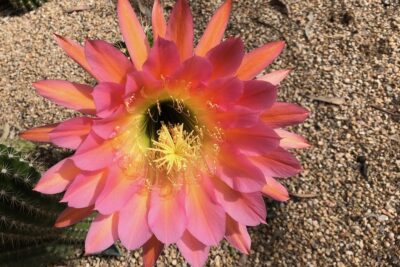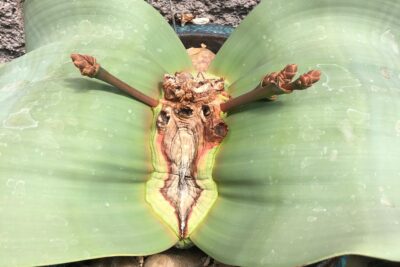For 15 years, Woody Woodruff has kept everything running smoothly at an estate in Arizona's Sonoran Desert. The 7-acre property is in the high-end community of Paradise Valley, NE of Phoenix.
"It's a legacy garden," Woody says. "I'd roll over in my grave if the property were sold and the garden torn out." His love of his "babies"---thousands of cacti and succulents---is evident, as is his southern drawl. "I was born in Atlanta, Georgia," Woody says, adding with a laugh, "I like to say 'I'm American by birth and Southern by the grace of God.'"
Although the types of ornamental plants that thrive in this harsh climate---with winter temps below freezing and summers in the triple digits---is limited (see Gallery below), Woody continually tests new ones. In addition to aloes from African deserts and vibrant pink trailing vinca, what amazed me was seeing good ol' Agave attenuata.
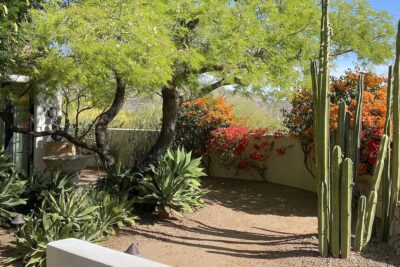
Agave attenuata, bougainvillea, Mexican fence post (Pachycereus marginatus)
A colony of thin-leaved, bright green "foxtail agaves"---quite common back home in Southern CA---made me exclaim, "You can't grow those here!" Agave attenuata is ubiquitous in Southern California, especially along the coast, but needs protection from harsh sun and frost.
Woody grinned. "Yeah. There's only one place on the property they'll grow, and this is it." We were in a patio beneath a lacy tree. Brilliant red and orange bougainvillea soaked up sun along a low wall nearby. Fifteen feet away was a large swimming pool. Hm.
Woody's cheerful demeanor and ready laugh made my visit as fun as it was informative. You'll discover this yourself when you watch the video, and no doubt you'll want more of Woody. I did---here's my phone conversation with him after I got home.
Debra's Q&A With Woody Woodruff
DLB: Do you do hand's-on gardening or mainly supervise groundskeepers?
WW: My job is being a liaison for the owners for anything having to do with the grounds and buildings. I direct gardeners who replace and install plants. Mitschele's Landscaping Company in Phoenix comes twice a week, five workers, four to eight hours total.
DLB: Who did the landscape design, and when?
WW: Colwell Shelor in Phoenix, eight years ago. The landscape architect did a fabulous job of picking plants, but some weren't happy where they were placed. That wasn't anyone's fault, it takes time for plants to settle in.
DLB: Who decides what-goes-where now?
WW: It's collaborative. The design work has been done, but if I run across great plants like artichoke parryi agaves, I find a place where they'll be happy and look good. If I need a quantity of, say, barrel cactus, I call around and find the best deal. I may also move plants from one part of the property to another.
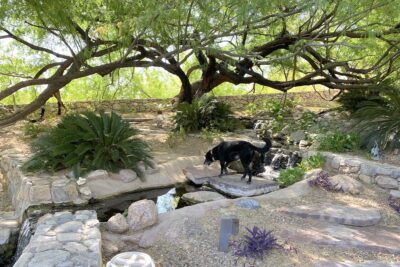
Mesquite tree, cycads
DLB: Talk about the trees that were the only things left after everything else was removed.
WW: There aren't many varieties, but those we do have provide important shade. Mesquite, ironwood, Texas ebony, several kinds of palo verde.
DLB: We grow the cultivar 'Desert Museum' in Southern CA, because it's thornless and produces masses of flowers.
WW: There's a 'Desert Museum' near the entry gate, but most of the estate's palo verdes are indigenous to the area.
DLB: What should homeowners keep in mind when doing a desert garden?
WW: Well, my big thing is soil. I think what's happening in it is more important than what's happening on top of it.
DLB: In the video you talk about soil, when to fertilize, and more. Would you summarize that?
WW: The soil is 100 percent decomposed granite. We use a hand-crank spreader to apply a balanced 20-20-20 granular fertilizer to the entire garden before the late-summer monsoons and around Christmas, before the January-February rains.
DLB: What about irrigation?
WW: We're fortunate to be able to use well water. I don't think plants like city water's chlorine and potash, but that's just me.
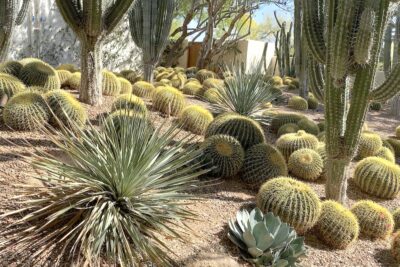
Dasylirion wheeleri, golden barrels, Agave parryi truncata 'Huntington'
DLB: What kind of topdressing do you use to cover the garden's bare spots?
WW: It's Apache Brown 3/8 minus (which means real small) from Kingman, Arizona. It's a granite gravel with a lot of light colors, which keeps it from getting too hot. We're constantly fighting high ground temperatures that cook plants.
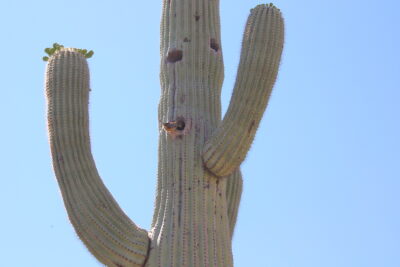
A cactus wren nests in a healthy saguaro.
DLB: What do you advise people to do about the necrosis that's killing saguaros?
WW: It's not an epidemic, but it is a problem. There's no cure. You can't fight it. It's best to remove a sick plant so the fungus isn't spread by grubs, spores, and birds.
DLB: Do you live on the grounds of the estate?
WW: Yes, in a cottage at the bottom of the driveway.
DLB: Horticulturist Rich Zeh, a consultant for the estate, introduced us. I'm glad he did. I really appreciate your time and expertise.
WW: Thank you. My pleasure.
Related Info on This Site
See Rich Zeh’s 30-Year Succulent & Cactus Collection
Rich Zeh has an Aladdin’s trove of cacti and succulents. “I’m pretty much maxed out on space,” he says of his one-acre garden and greenhouse in Paradise Valley (Phoenix) Arizona.
Euphorbia or Cactus? How to Tell
How can you tell a spiny euphorbia from a cactus? Observe key characteristics: the type of spines, flowers and leaves (or lack thereof). As I compiled my site’s new Euphorbia page, I happily acquired the ability to tell at a glance which is which. Sure, you can scratch a plant, and if it drips milky sap, it’s
The post See a Legacy Desert Garden with Estate Manager Woody Woodruff appeared first on Debra Lee Baldwin. Copyright © Debra Lee Baldwin.
from Debra Lee Baldwin https://ift.tt/7J9F2OI
via IFTTT

